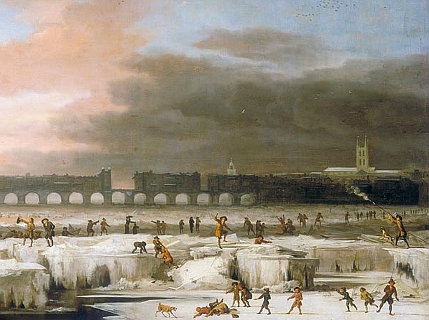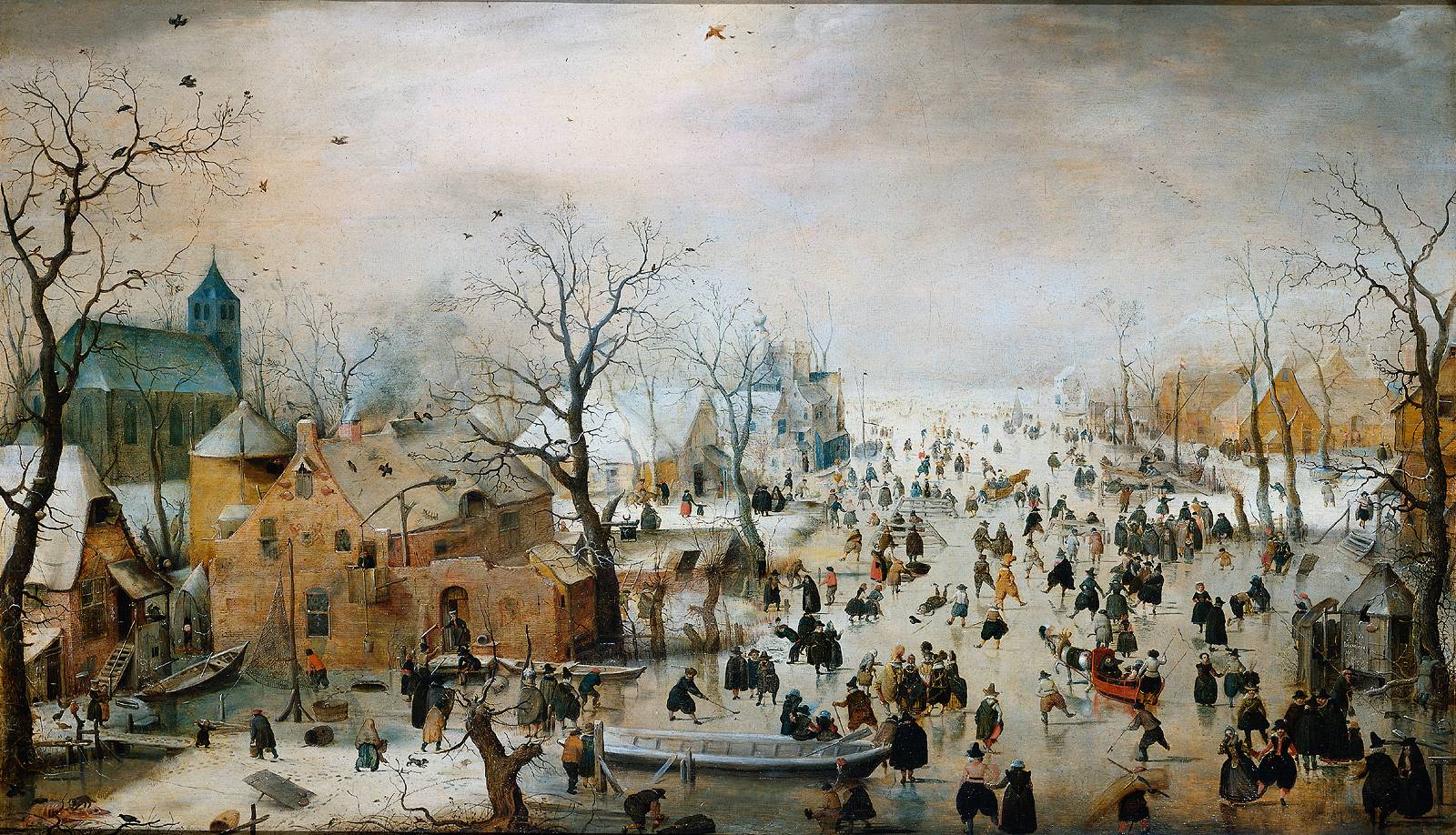The Little Ice Age
1430 - 1850
Author Frits Locher; translation Dutch to English by Bev Thurber (2025)
After the last great ice age, which ended about 11,000 years ago, there were numerous small climatic fluctuations. Therefore it was relatively warm during the Roman period and the Middle Ages.


This was followed by a cold period that we call the Little Ice Age. This period lasted roughly from 1300 to 1850. The temperature was an average of two degrees colder than it is today. But the cold was certainly not constant during the Little Ice Age. In the last quarter of the 16th century there were some very harsh winters, as there were in the first quarter of the 17th century and between 1650 and 1720. These winters started as early as November and sometimes continued until the beginning of April. Large rivers such as the Rhine and the Thames froze occasionally. The exact timeframe of the Little Ice Age is much discussed by climate researchers.
After 1850, the climate began to warm, the number of genuine ice-winters decreased. At the moment we are in a relatively warm period.
The Little Ice Age made a great impression on those who lived through it. Partly as a result of this, cold winters and winter scenes were often captured in prints, paintings and tiles; as well as literature and poetry. Frost and snow strongly influenced social life. Food supplies could run short and water facilities could freeze, but there was also a lot of fun on the ice with skates, colf, sleds and fairgrounds. In London a carnival was held on the frozen River Thames for the first time in 1607 and for the last time in 1814.


The Little Ice Age helped create a demand for skates. Around 1250, the primitive wooden skate, which we have found during excavations in the Netherlands, was invented. After that came other models. Initially, these were simple in construction and shape.
By 1600 the first skate with a nice curl was made. Such skates are frequently depicted on old tiles.
The icy Dutch winter landscape during the Little Ice Age has been immortalized by painters such as Pieter Breughel the Elder (1525-1569), Hendrick Avercamp (1585-1634) and Aert van der Neer (1603-1677).
These paintings depict a frozen water surface next to a castle, an old house, a farm or a mill. Everything happens on the ice: all kinds of people skate, walk, push sleds or entertain themselves in other ways. This type of winter fun remained popular after the Little Ice Age, so after 1850, that many painters have continued to put such scenes on canvas to this day.
The Little Ice Age has left an indelible memory.

Sources
This article was previously published in
1. Kouwe drukte volume 18 - number 50 - April 2014 pag. 8. [ISSN 1572-4476].
Kouwe drukte is a magazine published by the Dutch collectors club Foundation De Poolster (since June 2025 Foundation Schaatshistorie)
2. The newsletter of the Antique Ice Skate Club, volume 15, issue 3, July 2014.